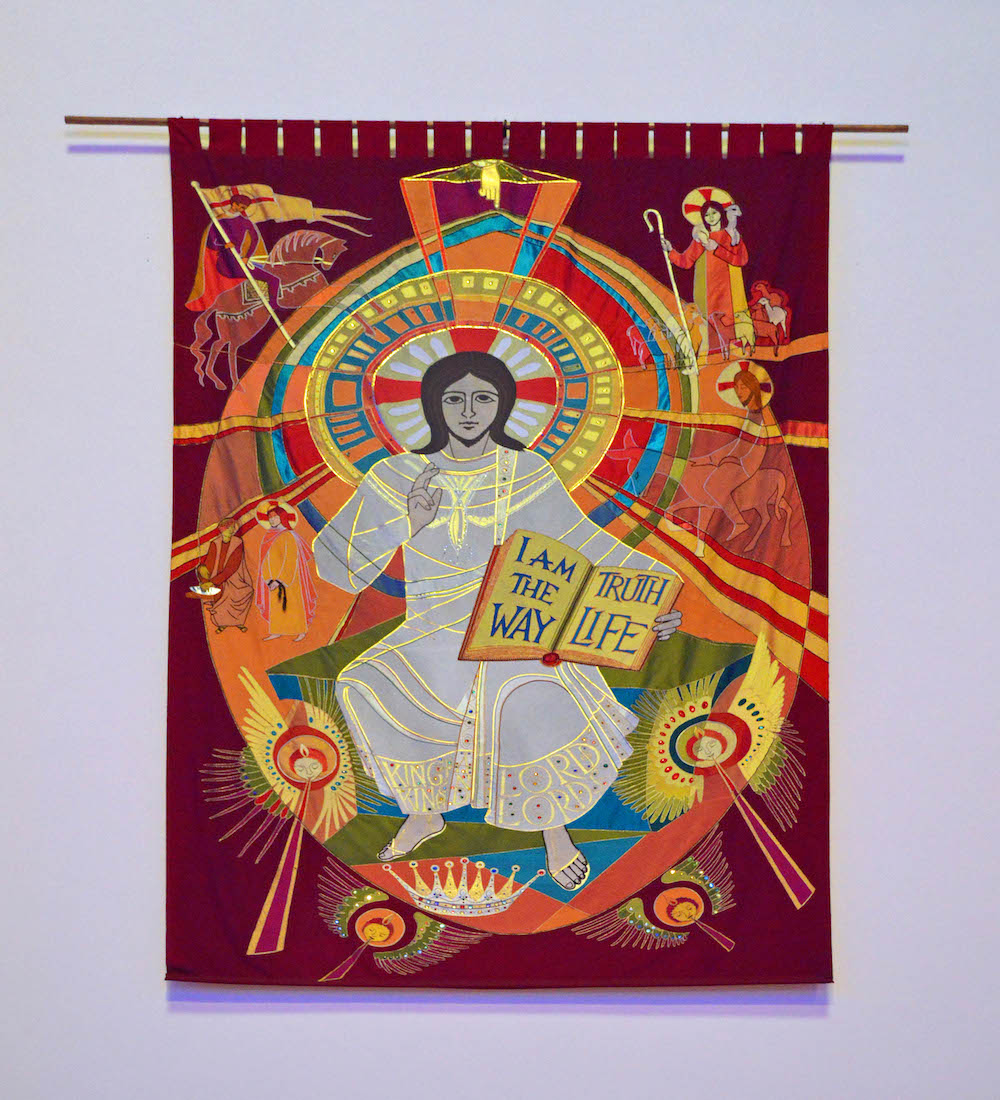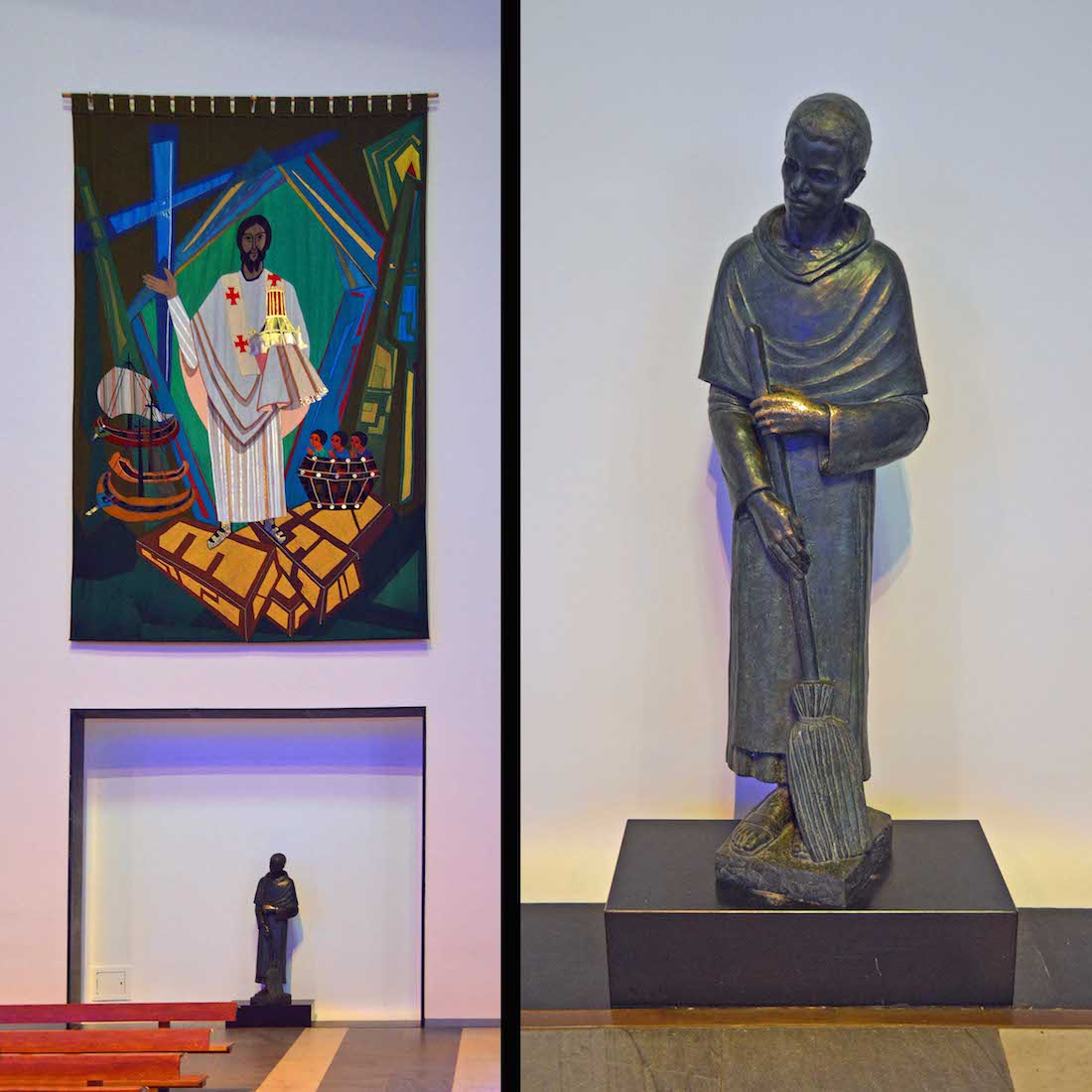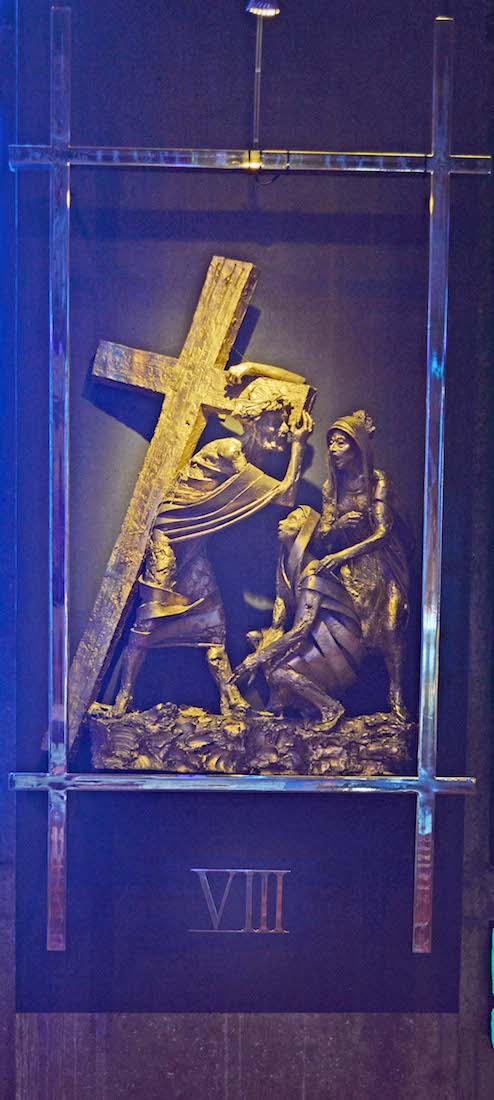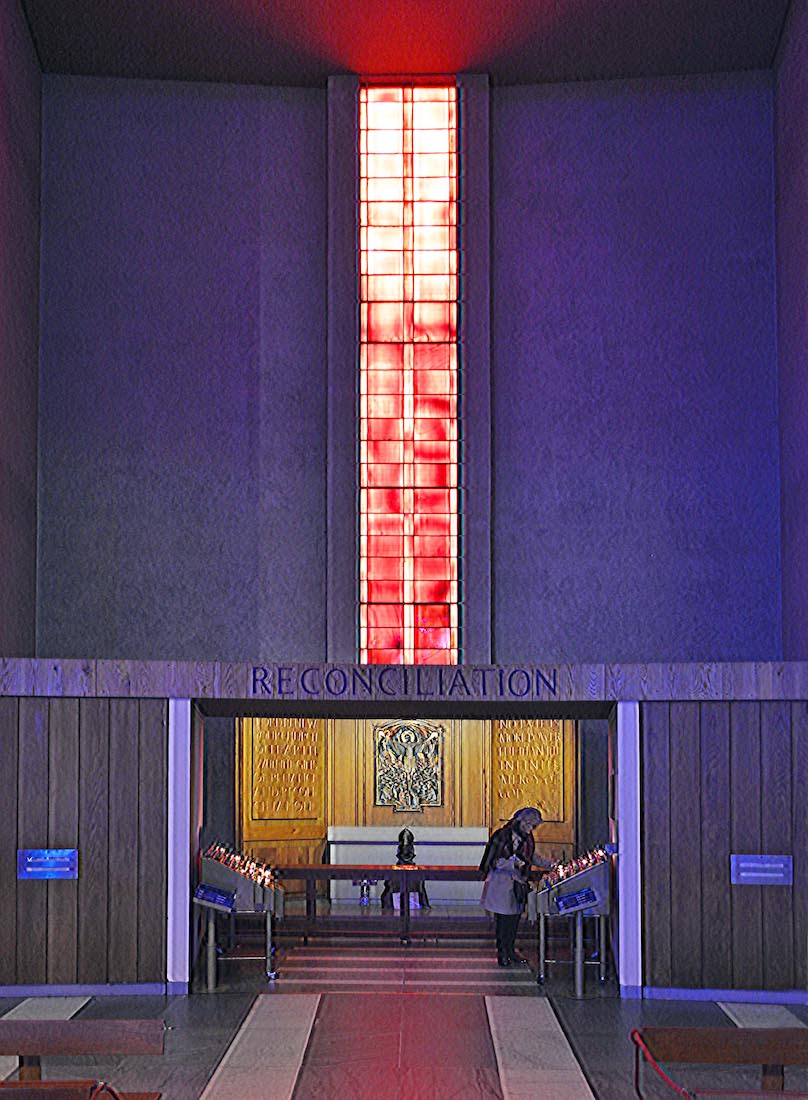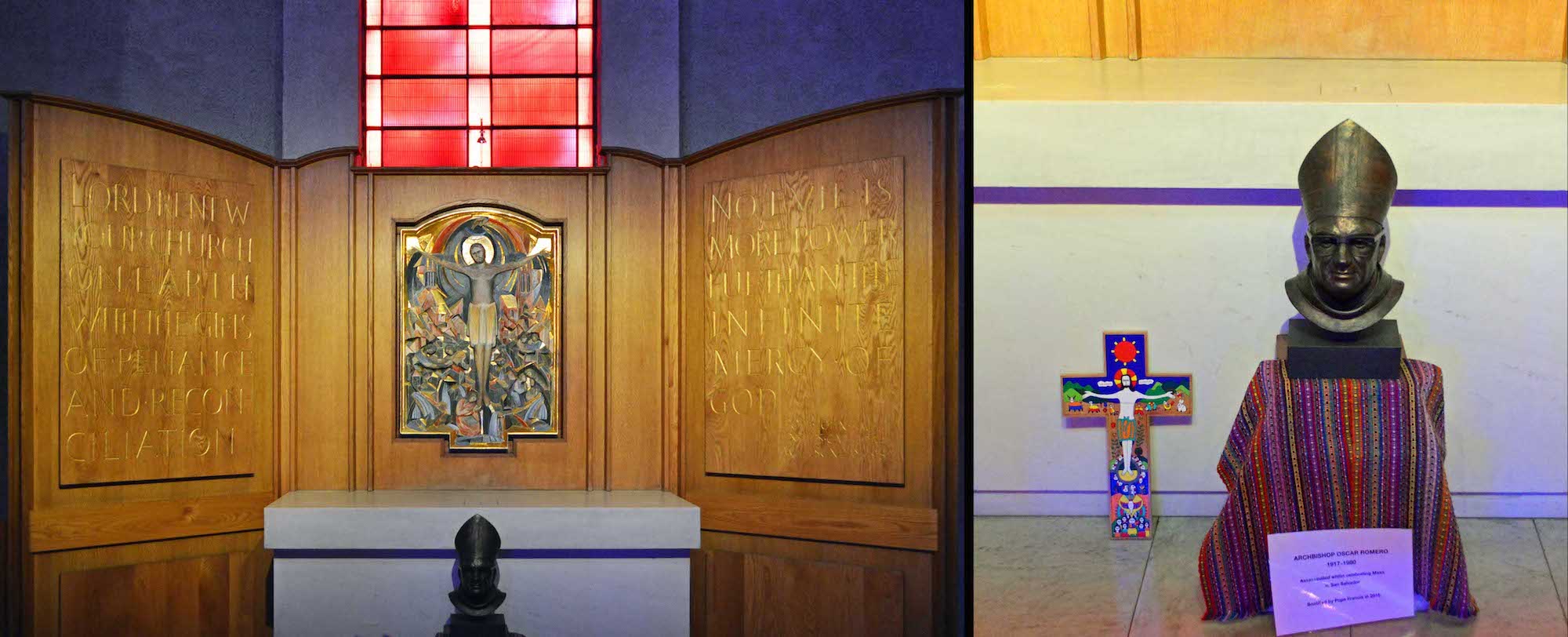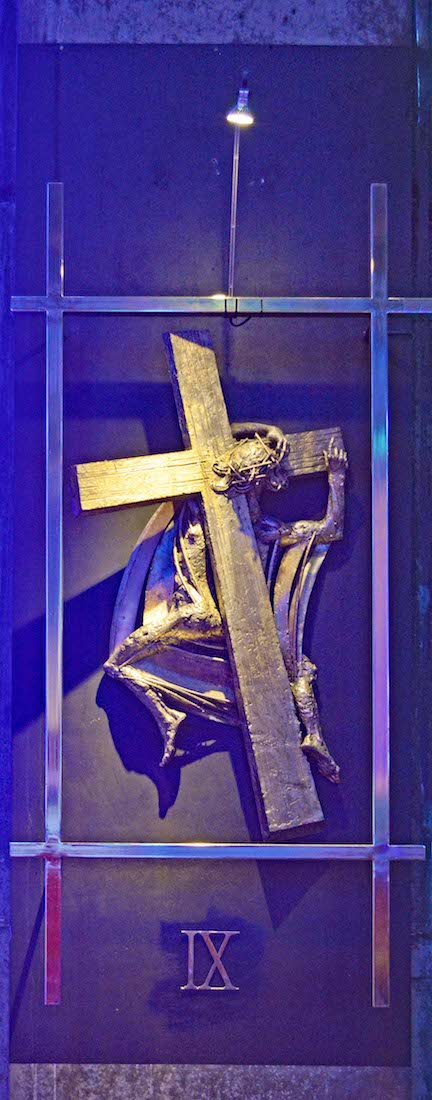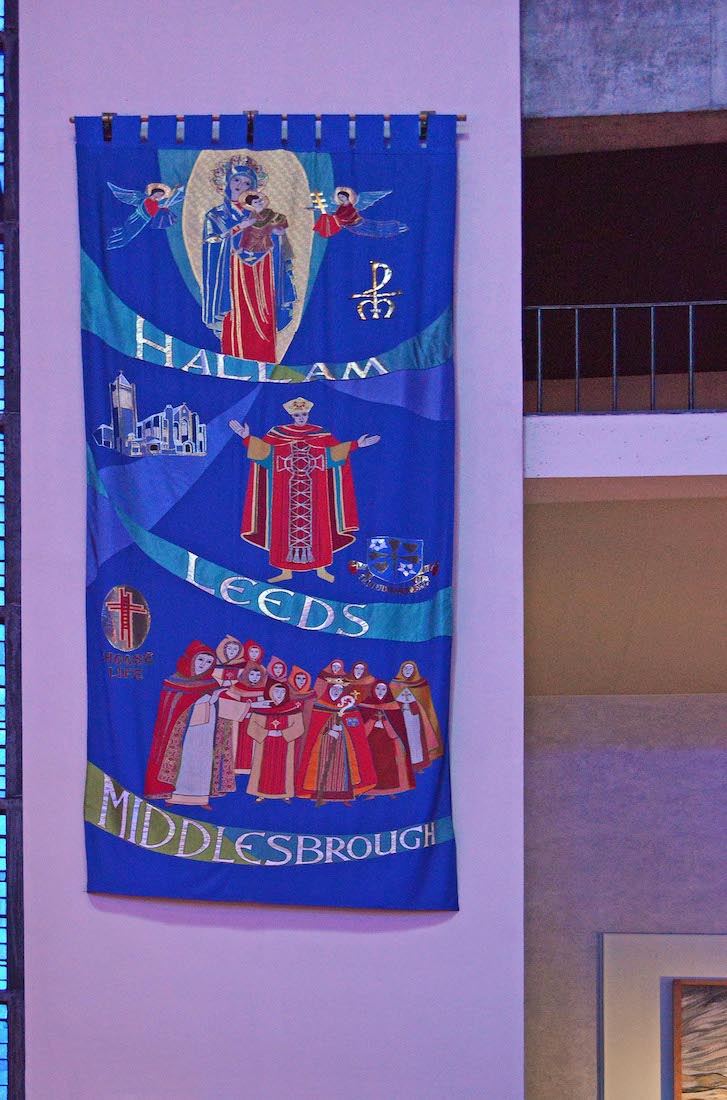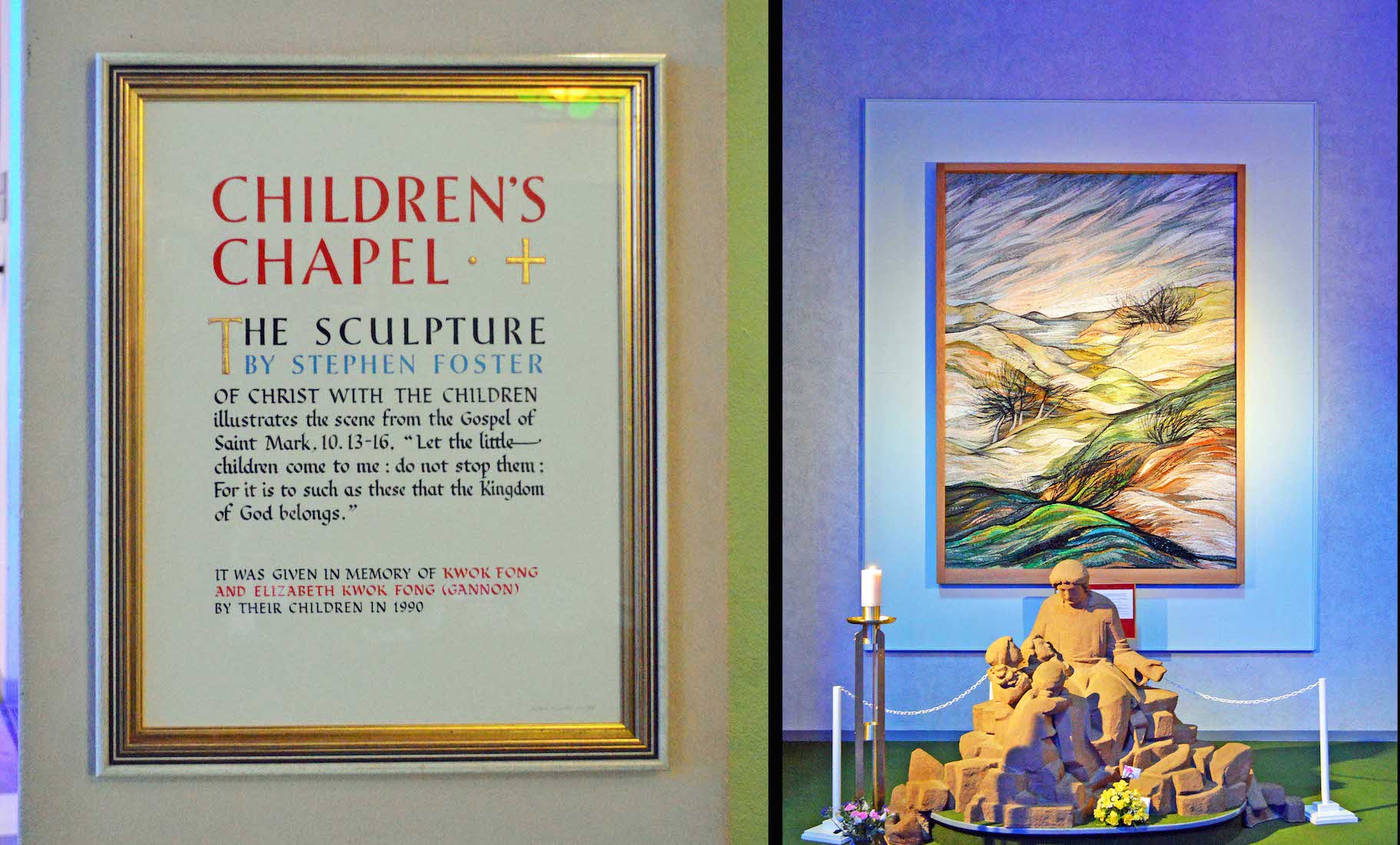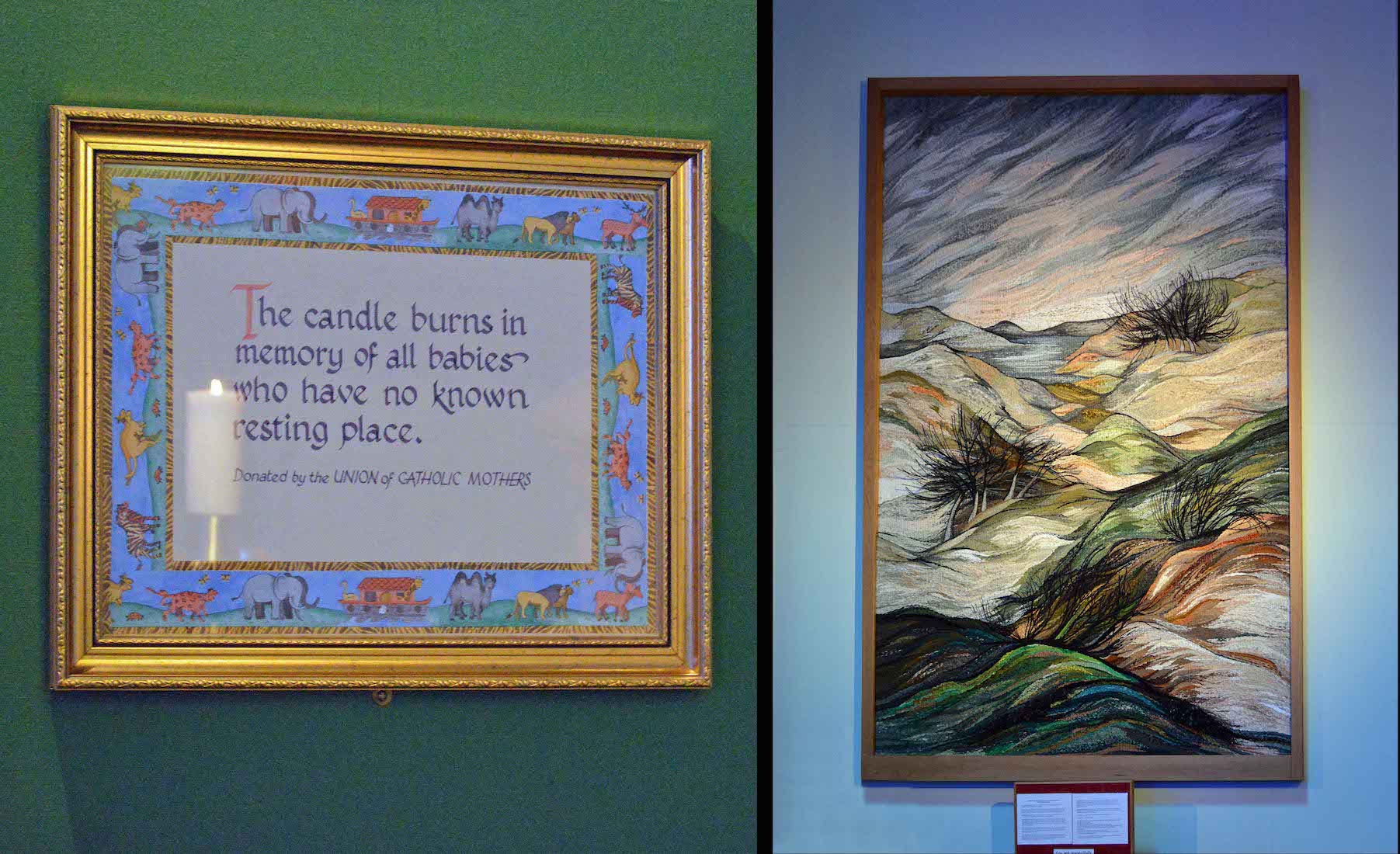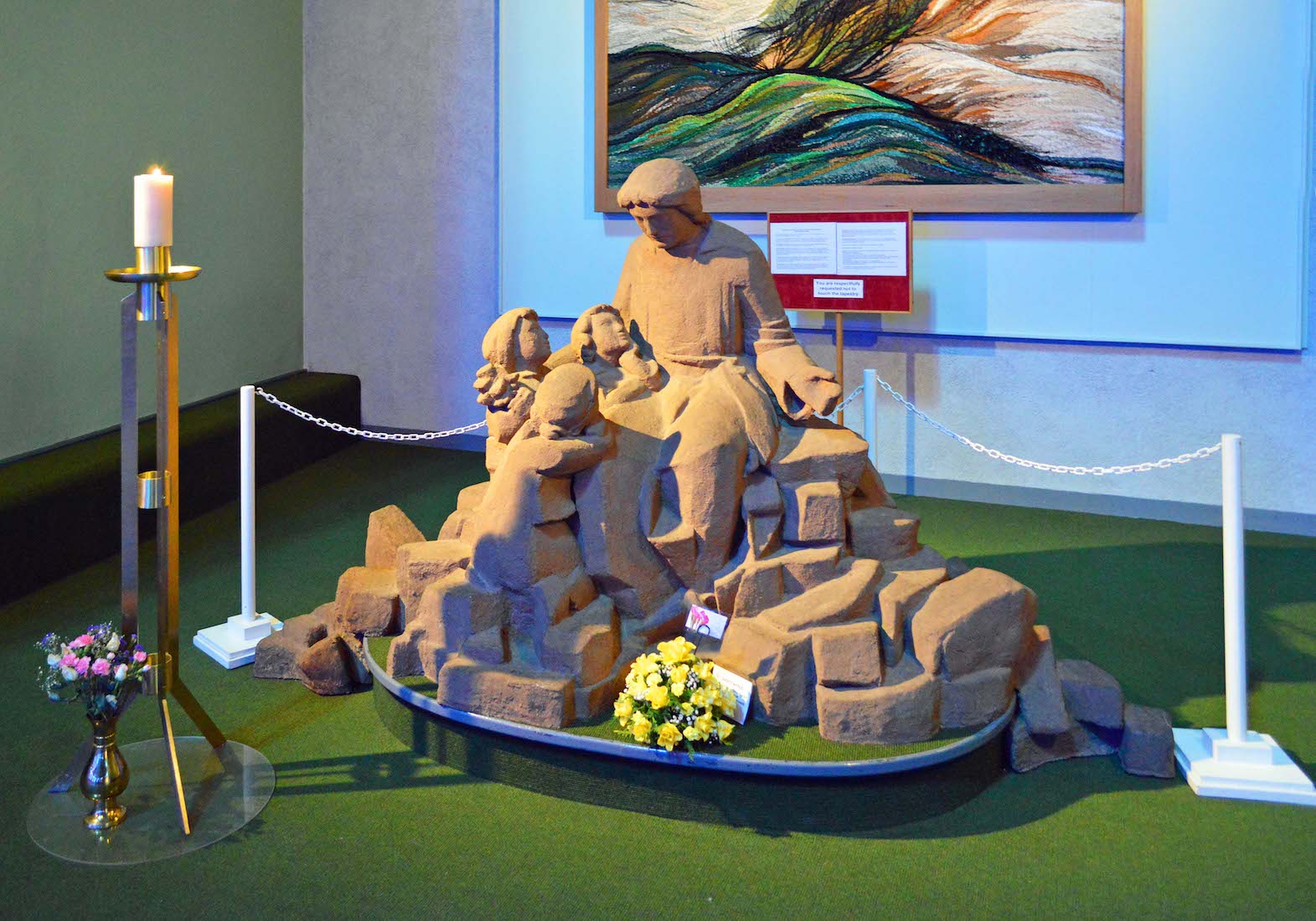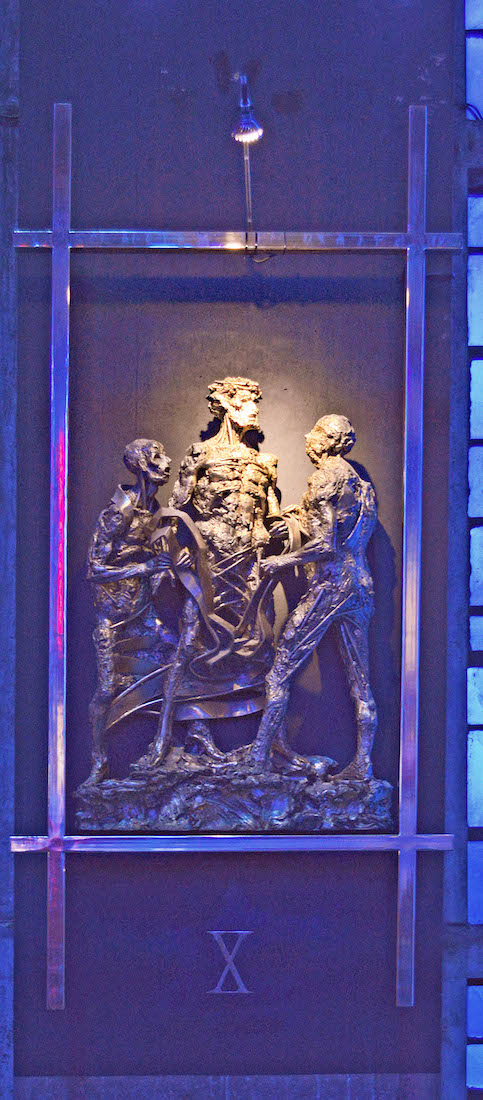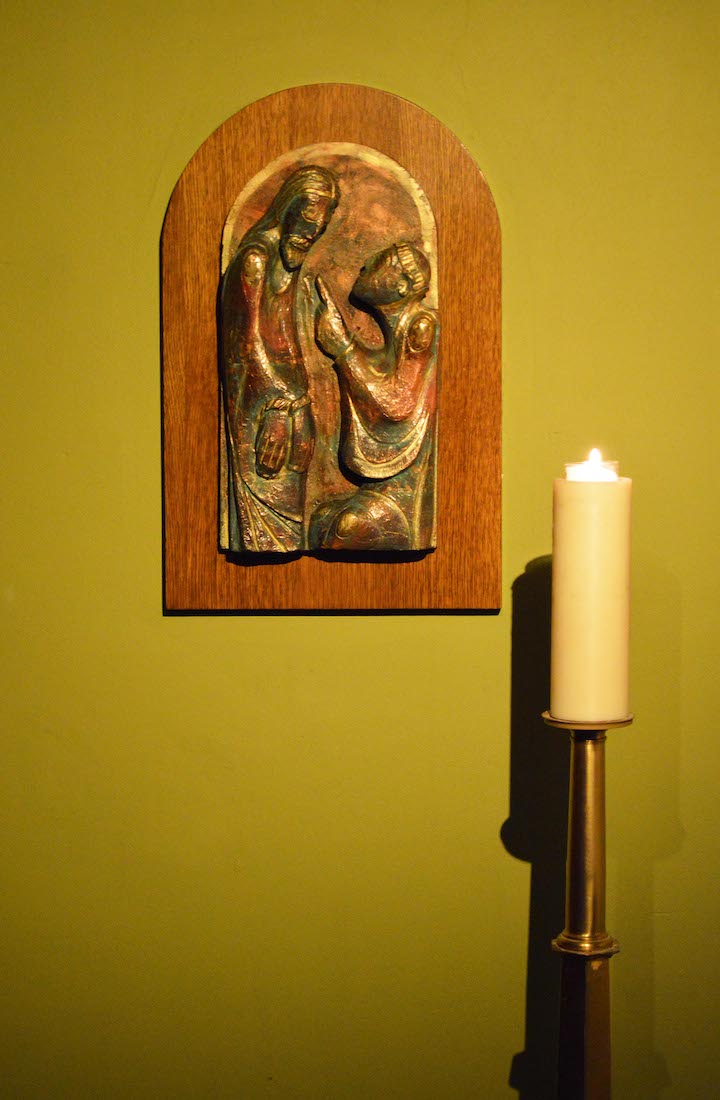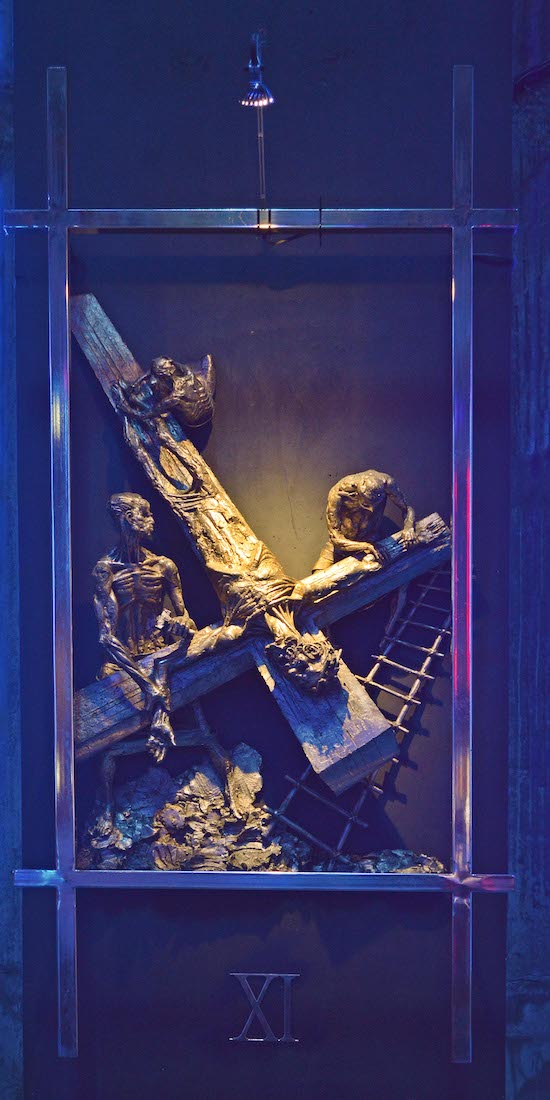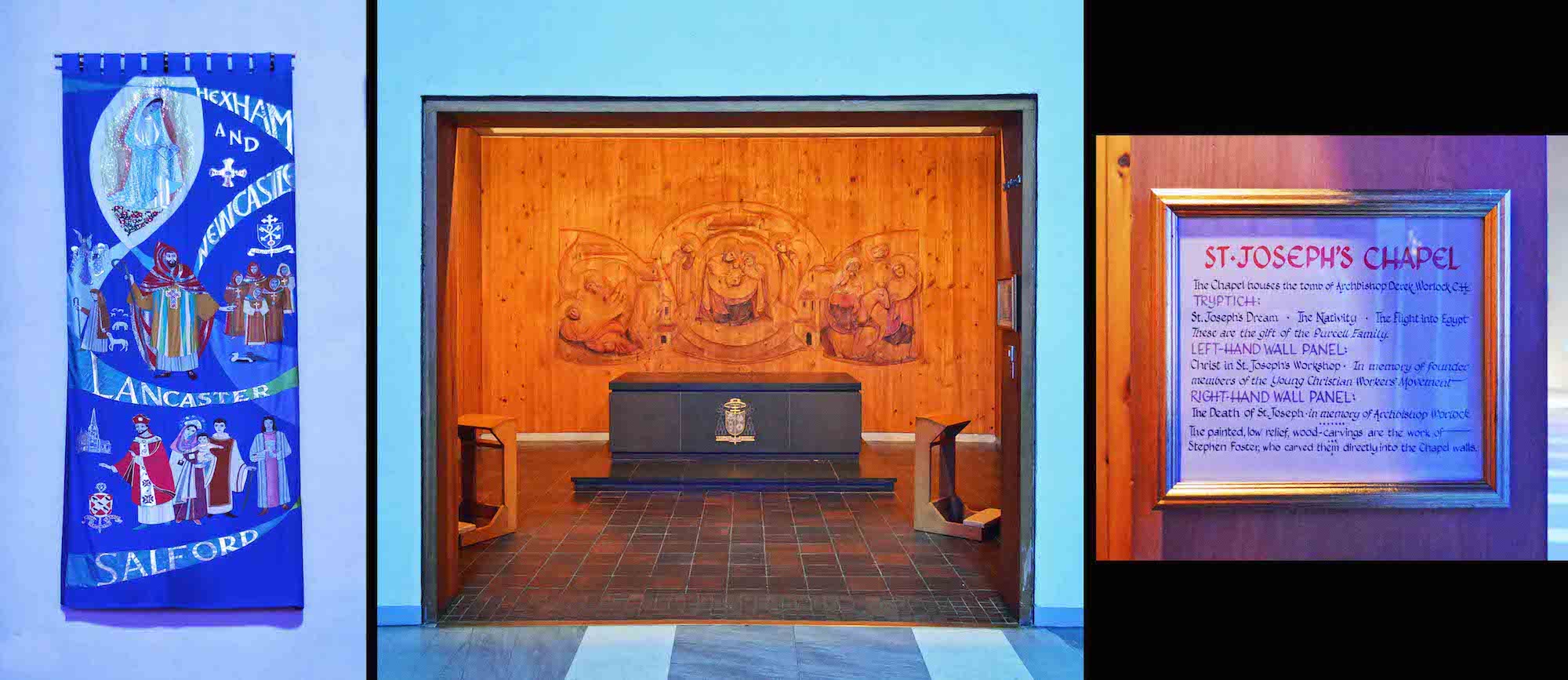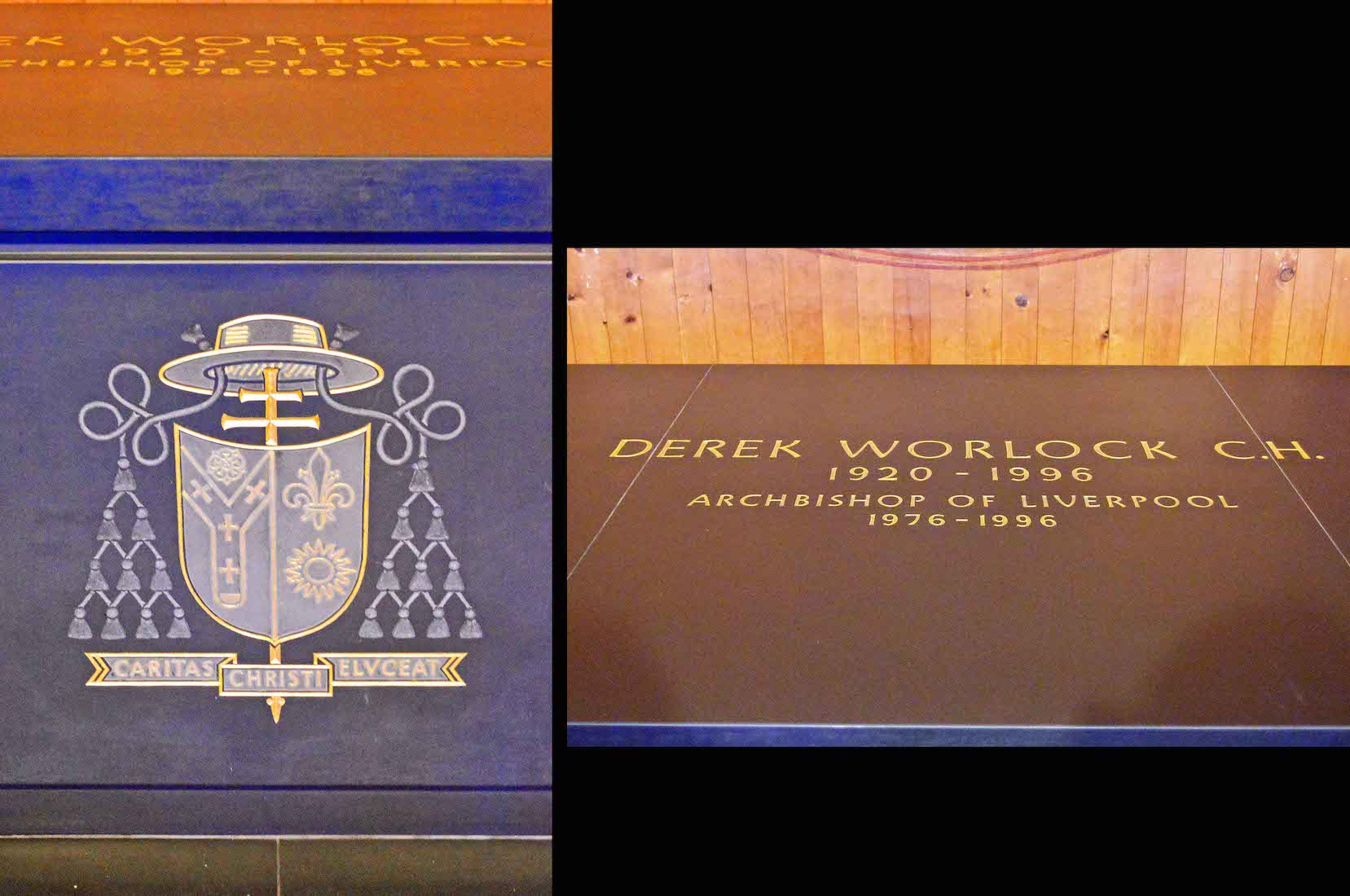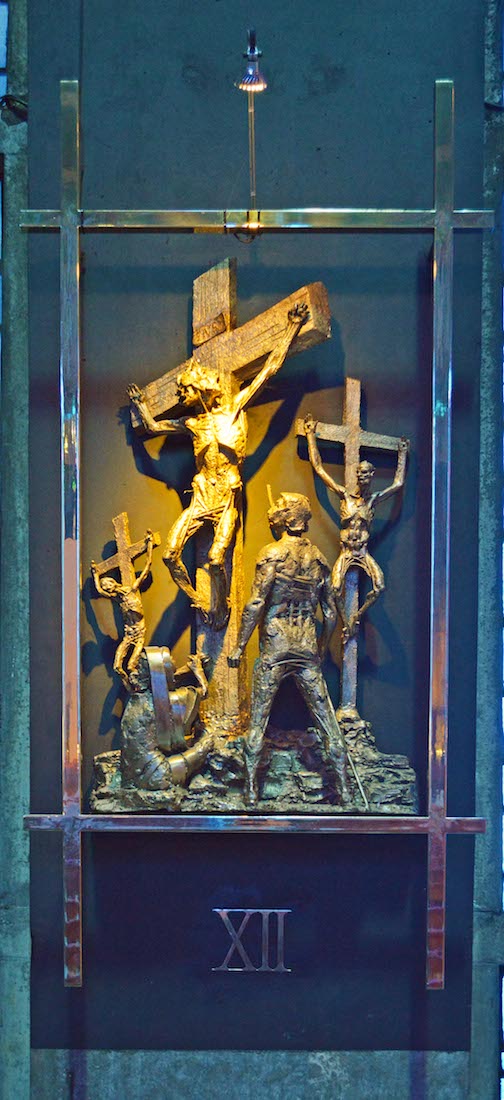21. LECTERN, PASCHAL CANDLE AND ALTAR
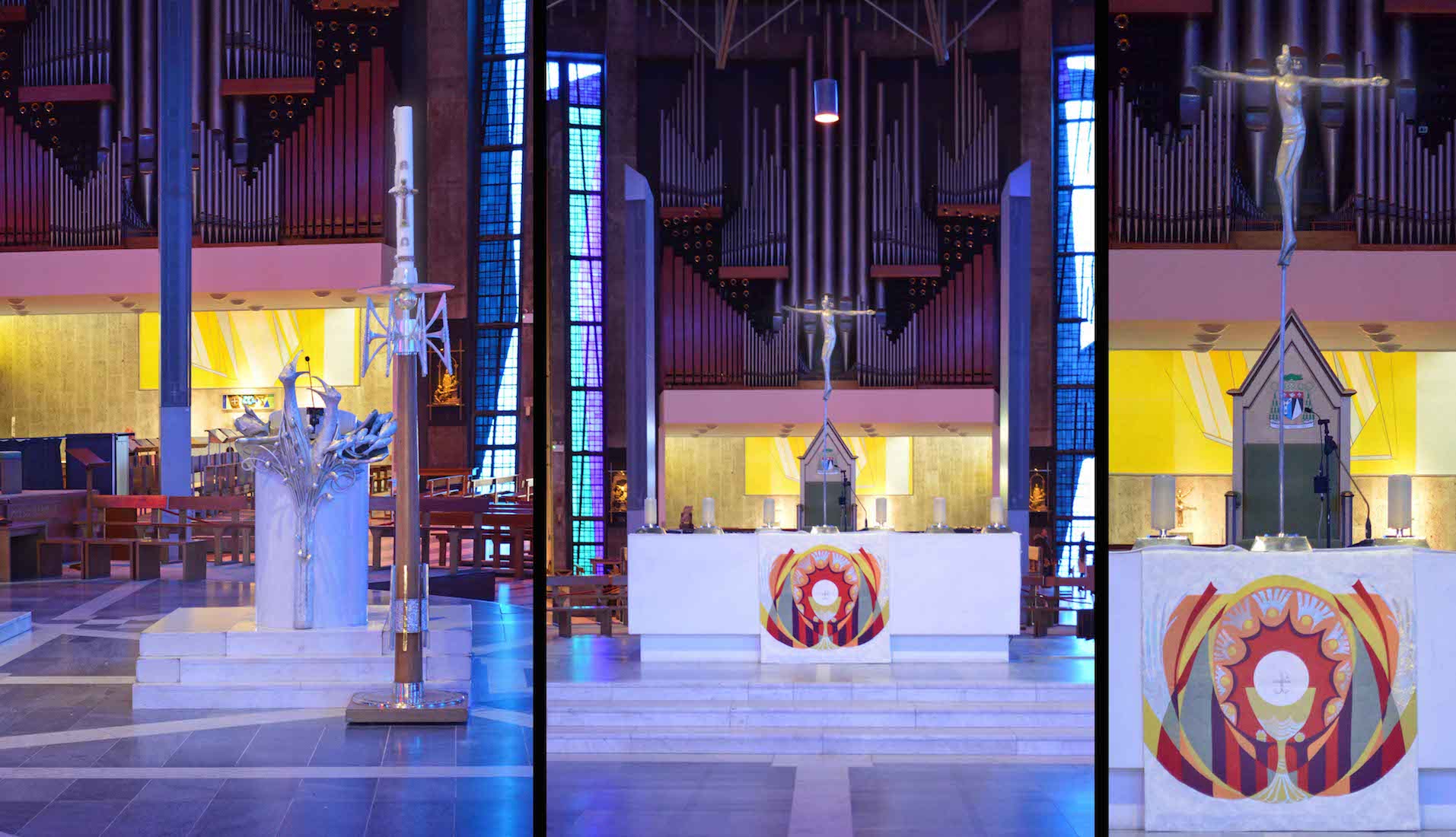
Sean Rice designed the lectern (ambo), which includes two entwined eagles. The Paschal candle reminds us that Christ is the Light of the world; it is lit particularly around Easter time. On the altar, the candlesticks are by R. Y. Goodden and the bronze crucifix is by Elisabeth Frink. The altar frontal displays a symbol of the Eucharist. Behind the altar is the cathedra – the Bishop’s throne; the presence and significance of this throne is what allows this church to be called a cathedral. The cathedra displays the coat of arms of the present Bishop. PLAN
22. CORONA
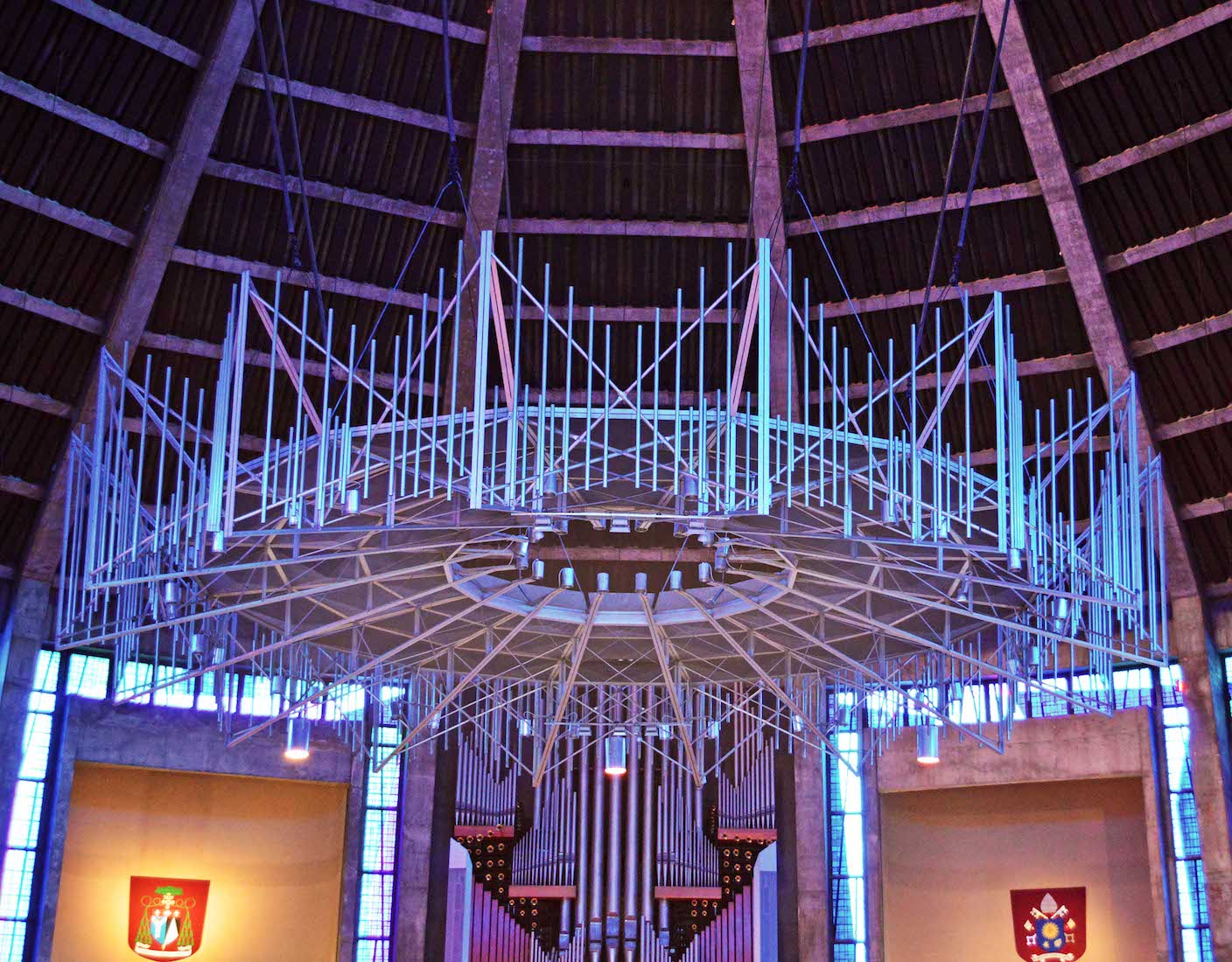
Above the altar is a baldachino (corona, crown) designed by Gibberd as a crown-like structure composed of aluminium rods, which incorporates loudspeakers and lights. This complements the exterior crown placed on the top of the lantern. Both allude to the Cathedral title as being the Cathedral of Christ the King..
23. CHRIST BANNER ABOVE THE ENTRY
This banner of Christ is placed on the wall above the entry. As patron of the Cathedral, Christ the King sits on a throne within a mandorla (the almond shaped frame – symbol of divinity). He is crowned with a cross rather than a crown, which instead lies at his feet.
24. ST MARTIN DE PORRES CHAPEL
St Martin de Porres was born in Lima, Peru in 1579. He entered the Dominican order and devoted his life to the poor. He died in 1639. The bronze statue by Isabel Benavides of Lima is a reminder of the work of LAMP, the Liverpool Archdiocese Missionary Project in South America, of which St Martin de Porres is the patron.
25. STATION VIII
The Stations of the Cross or the Way of the Cross, also known as the Way of Sorrows or the Via Crucis, refers to a series of images depicting Jesus Christ on the day of his crucifixion, and accompanying prayers. The Stations are spaced regularly around the wall of this Cathedral and will mark our progress. Unfortunately for us they are not quite in order: we begin to the right of the entry door with Station VIII: Jesus meets the women of Jerusalem.
26. CHAPEL OF RECONCILIATION
We come to the Chapel of Reconciliation – a space which incorporates rooms for counselling or the hearing of private confessions. Here there is a low relief sculpture by Stephen Foster (born 1952), illustrating personal and communal reconciliation.
27. CHAPEL REREDOS AND STATUE
In the central sculpture, Christ on the Cross extends his arms in forgiveness as individuals and groups ask pardon from him and from each other. Liverpool’s two cathedrals, Anglican and Catholic, may be discerned in the background. Text on either side reads: ‘Lord renew our Church on earth with the gifts of penitence and reconciliation. No evil is more powerful than the infinite mercy of God.’ Also remembered here is Bishop Oscar Romero who was assassinated while celebrating Mass in San Salvadore in 1980.
28. STATION IX
These Stations of the Cross are the work of Liverpool artist Sean Rice. They were first modelled in wax and clay, then cast by the lost wax process in manganese bronze. They were the gift of Archbishop Worlock to his Cathedral. Station IX : Jesus falls for the third time.
29. DIOCESES BANNER
The Liverpool Archdiocese covers the Isle of Man and part of northwest England. This includes the Dioceses of Hallam (Sheffield), Leeds and Middlesbrough, shown here on this banner.
30. CHILDREN’S CHAPEL SCULPTURE
The next chapel is dedicated to children. It contains a sculpture by Stephen Foster of Jesus with a group of children, illustrating the words of Jesus, ‘Let the children come to me’. The inscription is in English and Chinese, recalling that the sculpture is the gift of Liverpool’s long-established Chinese community.
31. CHAPEL SIGN AND PAINTING
In this chapel a candle burns constantly and flowers are laid in memory of those infants who have no known grave. The painting shows a somewhat desolate unexplored landscape.
32. JESUS WITH CHILDREN
A good final memory of this lovely chapel ...
33. STATION X
I do not find these Stations at all appealing when viewed close up, but in situ and from a little distance, they are really dramatic. Station X : Jesus is stripped of his clothes
34. AMNESTY CHAPEL
The Amnesty Chapel is a small chapel in the west porch. It is a chapel which remembers people around the world who are imprisoned and tortured for their beliefs. The cause has been taken up by the organization Amnesty International whch has as its symbol a burning candle wrapped with barbed wire.
35. AMNESTY CANDLE, SCULPTURE
In the Amnesty Chapel a candle (usually!) wrapped with barbed wire burns perpetually as a reminder of prisoners of conscience, and the small wooden sculpture of Christ before Pilate by Peter Ball (born 1943) is a poignant symbol of all those persecuted for their beliefs. The candlestick was designed by Sir Edwin Lutyens for his uncompleted Cathedral project.
36. STATION XI
The Stations are all of the same size and orientation, and framed by four pieces of tubing with square cross section. The spot lighting and the three dimensional construction enhance the dramatic effect. Station XI : Jesus is nailed to the cross.
37. DIOCESES BANNER, ST JOSEPH’S CHAPEL
The banner at left names three further Catholic dioceses in the Liverpool Archdiocese: Hexham and Newcastle, Lancaster, and Salford. This is adjacent to St Joseph’s Chapel which houses the tomb of Archbishop Worlock. The three walls of the chapel are described as a triptych, and depict scenes from the life of Joseph.
38. WORLOCK TOMB
Derek John Harford Worlock, CH (4 February 1920 – 6 February 1996) was an English prelate of the Roman Catholic Church; his highest posting was as the 7th Archbishop of Liverpool. As a small boy he was rebuked for ‘having an answer to everything’ – a trait that remained. In 1965 he was appointed Bishop of Portsmouth where he remained until becoming Archbishop of Liverpool 1976 – 1996. He was committed to reconciliation and evangelism.
39. WALLS OF ST JOSEPH’S CHAPEL
There are paintings on the three chapel walls. At left Joseph is shown in his carpenter’s workshop, instructing the child Jesus. The wall in front depicts three memorable incidents in the life of Jesus: the angel telling him not to fear taking Mary as his wife, the birth of Jesus in Bethlehem, and the flight of the Holy Family to Egypt. On the right, Joseph is portrayed in his deathbed, supported by Mary and Jesus.
40. STATION XII
The sculptures have a rough and rugged look: this is exaggerated by the use of metal strips and rods. Station XII : Jesus dies on the cross.


